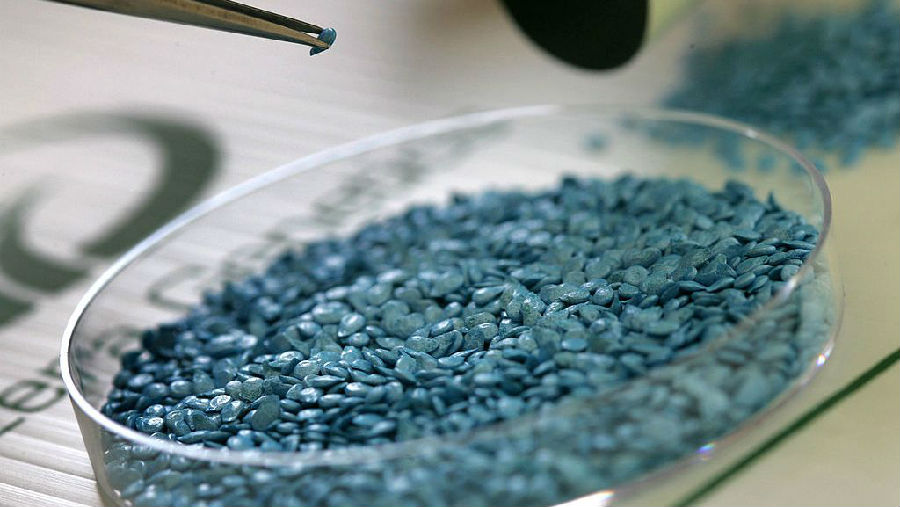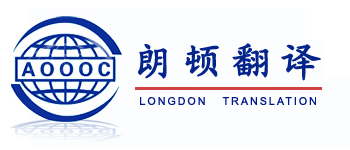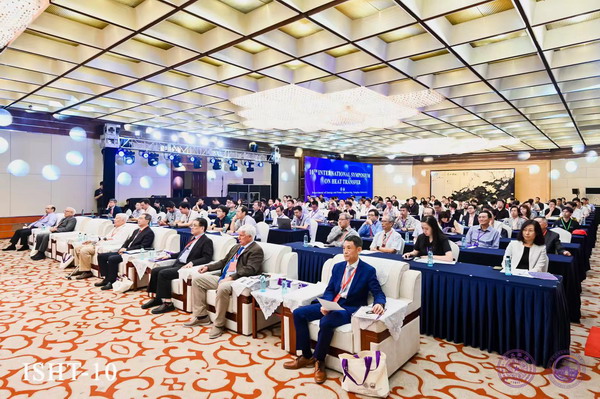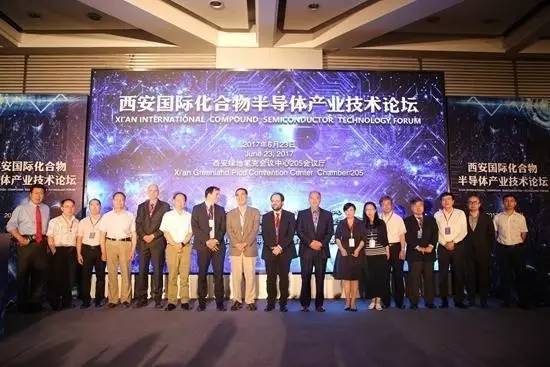Genetically modified crops resumed their march across the worldбпs farmland last year, with GM plants covering a record 185m hectares бк 3 per cent more than 2015. By far the largest increase was in Brazil, the engine of global GM growth, where the area expanded by 11 per cent to 44m hectares.
╚е─ъгм▐D(zhuигn)╗ї╥Ґ▐r(nиоng)╫і╬я╗╓П═(fи┤)┴╦╘┌╚л╟Ґ╕√╡╪╔╧╡─ФU(kuи░)ПИД▌ю^гм╞ф╖N╓▓├ц╖e▀_(dив)╡╜ДУ(chuидng)╝o(jим)фЫ╡─1.85Г|╣лэХгм▒╚2015─ъ╕▀│І3%бг╘І╖ї╫ю┤ґ╡─╩╟░═╬ігм╘УЗЇ╩╟╚л╟Ґ▐D(zhuигn)╗ї╥Ґ▐r(nиоng)╫і╬я╘ІщL╡─╥¤╟цгм╖N╓▓├ц╖eФU(kuи░)┤ґ11%гм╓┴4400╚f╣лэХбг
The figures come from the most authoritative annual survey of GM crops worldwide, carried out by the International Service for the Acquisition of Agri-Biotech Applications, a global network of non-profit centres that promote agricultural biotechnology. The equivalent ISAAA study a year ago had shown a small decrease in planting, the first since GM crops were commercialised 20 years ago.
▀@╨йФ╡(shи┤)У■(jи┤)Бэ╫╘╙╨ъP(guибn)╚л╟Ґ▐D(zhuигn)╗ї╥Ґ▐r(nиоng)╫і╬я╡─╫юЩр(quивn)═■─ъ╢╚╒{(diидo)▓щгм╒{(diидo)▓щ╙╔ЗЇыH▐r(nиоng)ШI(yии)╔·╬я╝╝╨g(shи┤)Ск(yийng)╙├╖■Д╒(wи┤)╜M┐ЧгиInternational Service for the Acquisition of Agri-Biotech Applicationsгм║Ж╖QISAAAгй╒╣щ_бг╘У╜M┐Ч╩╟╥╗ВА(gии)╚л╟Ґ╨╘╛W(wигng)╜j(luи░)гм╞ь╧┬╙╨╢рВА(gии)═╞ПV▐r(nиоng)ШI(yии)╔·╬я╝╝╨g(shи┤)╡─╖╟аI└√╓╨╨─бг╘У╜M┐Ч╥╗─ъ╟░╡─╤╨╛┐я@╩╛гм▐D(zhuигn)╗ї╥Ґ▐r(nиоng)╫і╬я╖N╓▓├ц╖e┬╘╙╨Ьp╔┘гм▀@╩╟╫╘▐D(zhuигn)╗ї╥Ґ▐r(nиоng)╫і╬я20─ъ╟░щ_╩╝╔╠ШI(yии)╗п╖N╓▓╥╘Бэ╡─╩╫┤╬бг
Paul Teng of Nanyang Technological University in Singapore, ISAAA chair, attributed the upturn to various factors in different parts of the world. б░There was some recovery in commodity prices, which had a positive effect particularly in the US,б▒ he said. б░Favourable weather led to an increase in planting in several countries.
ISAAA╓і╧пбв╨┬╝╙╞┬─╧╤ґ└э╣д┤ґМW(xuиж)(Nanyang Technological University)╜╠╩┌Paul TengМв▐D(zhuигn)╗ї╥Ґ▐r(nиоng)╫і╬я╖N╓▓├ц╖e╗╓П═(fи┤)╘ІщLЪw╥Ґ╙┌╚л╟Ґ▓╗═м╡╪Е^(qи▒)╡─╢рВА(gии)╥Ґ╦╪бгб░┤ґ╫┌╔╠╞╖Гr(jiид)╕ё╙╨╦ї╗╪╔¤гм▀@╙╚╞ф╘┌├└ЗЇоa(chигn)╔·┴╦╖eШO╙░эСгмб▒╦√▒э╩╛гмб░╙╨└√╡─╠ьЪт╩╣╢рВА(gии)ЗЇ╝╥╡─╖N╓▓├ц╖e╘І╝╙бгб▒
б░But the main driving force is that farmers appreciate the immense benefits of biotech crops for improved productivity and profitability, as well as conservation efforts,б▒ said Professor Teng.
╦√▒э╩╛г║б░╡л╓і╥к╡─═╞Д╙(dи░ng)╥Ґ╦╪╩╟▐r(nиоng)├ё╒J(rииn)╫R╡╜┴╦╔·╬я╝╝╨g(shи┤)▐r(nиоng)╫і╬яМж╙┌╠с╕▀╔·оa(chигn)┬╩║═└√ЭЩ┬╩╥╘╝░нh(huивn)▒г┼м┴ж╡─╛▐┤ґ║├╠Обгб▒
Sales of GM seeds in 2016 were also up 3 per cent on 2015, according to data provided by Cropnosis, a research company. The market was worth $15.8bn, equivalent to 35 per cent of global commercial seed sales ($45bn).
╕їУ■(jи┤)╤╨╛┐ЩC(jий)ШЛ(gи░u)Cropnosis╠с╣й╡─Ф╡(shи┤)У■(jи┤)гм2016─ъ▐D(zhuигn)╗ї╥Ґ╖N╫╙╡─фN╩█ю~╥▓▒╚2015─ъ╘ІщL3%бг▀@ЙK╩╨ИІ╡─╥О(guий)─гЮщ158Г|├└╘кгм╧роФ(dибng)╙┌╚л╟Ґ╔╠ШI(yии)╖N╫╙фN╩█ю~ги450Г|├└╘кгй╡─35%бг
Four species still dominate GM planting: maize, soyabeans, cotton and canola (oilseed rape). The two main б░traitsб▒ or characteristics conferred by genetic engineering so far have been herbicide tolerance, which enables farmers to spray fields with a weedkiller that does not harm the crop, and insect resistance, which stops pests eating the plants.
─┐╟░╖N╓▓╡─╓і╥к▐D(zhuигn)╗ї╥Ґ▐r(nиоng)╫і╬я╚╘╩╟╥╘╧┬╦─юРг║╙ё├╫бв┤ґ╢╣бв├▐╗и║═╙═▓╦╫╤бг─┐╟░╗ї╥Ґ╣д│╠┘x╙ш╡─Г╔╖N╓і╥к╠╪№c(diигn)╩╟─═│¤▓▌Дй║═┐╣╧x╨╘гм╟░╒▀╫М▐r(nиоng)├ё┐╔╥╘╧Ґ▐r(nиоng)╠яЗКЮв│¤▓▌Дйгм╡л▓╗В√║ж▐r(nиоng)╫і╬ягм║ґ╒▀┐╔╥╘╫ш╓╣║ж╧x┐╨╩│▐r(nиоng)╫і╬ябг
But new GM crops would soon propel another wave of expansion, Professor Teng said: б░With commercial approvals and plantings of new varieties of biotech potatoes and apples, consumers will begin to enjoy direct benefits of biotechnology with produce that is not likely to spoil or be damaged, which in turn has the potential to substantially reduce food waste and consumer grocery costs.б▒ For example genes added to GM apples and potatoes make them more resistant to browning or bruising when cut or bashed.
╡л╨┬╡─▐D(zhuигn)╗ї╥Ґ╫і╬яМвХ■(huим)║▄┐ь╥¤░l(fиб)╨┬╥╗▓иФU(kuи░)ПИгмPaul Teng▒э╩╛г║б░ыS╓Ї╥╘╔·╬я╝╝╨g(shи┤)┼р╙¤╡─╨┬╞╖╖N═┴╢╣║═╠O╣√л@╡├╔╠ШI(yии)╗п┼·Ь╩(zhи│n)║═╖N╓▓гм╧√┘M(fииi)╒▀Мв─▄щ_╩╝╧э╩▄╡╜╔·╬я╝╝╨g(shи┤)ОзБэ╡─╓▒╜╙╥ц╠Огм▐r(nиоng)оa(chигn)╞╖▓╗╠л┐╔─▄Й─╡Є╗Ґ▒╗╞╞Й─гмП─╢Ї╙╨┐╔─▄┤ґ┴┐Ьp╔┘╩│╞╖└╦┘M(fииi)║═╧√┘M(fииi)╒▀╘┌╩│╞╖╖╜├ц╡─│╔▒╛бгб▒└¤╚чгм▒╗╠э╝╙▀M(jимn)▐D(zhuигn)╗ї╥Ґ╠O╣√║══┴╢╣╡─╗ї╥Ґгм┐╔╩╣╠O╣√║══┴╢╣╘┌╟╨щ_╗Ґ╩▄╡╜╫▓УЄХr(shик)╕№▓╗╚▌╥╫╫Г╔л╗Ґ┼ІВ√бг
Although consumer and environmental groups across the world continue to resist GM crops, the resolutely pro-biotech ISAAA detects signs of changing attitudes.
▒M╣▄╩└╜ч╕і╡╪╡─╧√┘M(fииi)╒▀║═нh(huивn)▒гИF(tuивn)ґw└^└m(xи┤)╡╓╓╞▐D(zhuигn)╗ї╥Ґ▐r(nиоng)╫і╬ягм╡лИ╘(jiибn)╢и╓з│╓╔·╬я╝╝╨g(shи┤)╡─ISAAA░l(fиб)мF(xiидn)┴╦╚╦ВГСB(tидi)╢╚▐D(zhuигn)╫Г╡─╥╗╨й█E╧ґбг

In Africa, for instance, б░a new wave of acceptance is emergingб▒, with field trials of GM banana,cowpea and sorghum under way in several countries. Even in Europe, the heartland of anti-GMsentiment, 136,000 hectares of insect-resistant maize were planted бк 17 per cent up on2015.
└¤╚чгм╘┌╖╟╓▐гмб░╨┬╥╗▓и╡─╜╙╩▄└╦│▒╒¤╘┌│ІмF(xiидn)б▒гм╢рВА(gии)ЗЇ╝╥╒¤╘┌щ_╒╣▐D(zhuигn)╗ї╥Ґ╧у╜╢бвЄЇ╢╣║═╕▀┴╗╡─╘ЗҐЮ(yидn)╠ябг╝┤▒у╘┌╫іЮщ╖┤▐D(zhuигn)╗ї╥Ґ┤ґ▒╛аI╡─ЪW╓▐гм╥▓╖N╓▓┴╦13.6╚f╣лэХ╖└╧x║ж╡─▐D(zhuигn)╗ї╥Ґ╙ё├╫гм▌^2015─ъ╘ІщL┴╦17%бг
The commercial concentration of agricultural biotechnology is set to increase this year, withmegamergers in progress between Bayer and Monsanto, Dow Chemical and DuPont, andSyngenta and ChemChina. Although the industryбпs critics have expressed concern, Prof Teng issupportive.
╜ё─ъгм▐r(nиоng)ШI(yии)╔·╬я╝╝╨g(shи┤)╨╨ШI(yии)╡─╝п╓╨╢╚┴╧Мв╔╧╔¤гмФ╡(shи┤)╞Ё╠╪┤ґ║╧▓в╒¤╘┌═╞▀M(jимn)гм░№└и░▌╢·(Bayer)┼c├╧╔╜╢╝(Monsanto)бв╠╒╩╧╗пМW(xuиж)(Dow Chemical)┼c╢┼░ю(DuPont)гм╥╘╝░╧╚╒¤▀_(dив)(Syngenta)┼c╓╨ЗЇ╗п╣д(ChemChina)бг▒M╣▄ШI(yии)Г╚(nииi)┼·╘u╚╦╩┐▒э▀_(dив)┴╦У·(dибn)Сnгм╡лPaul Teng╓з│╓▀@╥╗┌ЕД▌бг
б░I really think that having fewer companies will be better for farmers,б▒ he said. б░The three orfour companies left will be better at carrying out groundbreaking R&D, transferringtechnology from the public sector and complying with international standards.б▒
╦√╒fг║б░╬╥╙╔╓╘╒J(rииn)Ющгм╣л╦╛Ф╡(shи┤)┴┐Ьp╔┘Мж▐r(nиоng)├ё╕№╙╨└√бг╩г╧┬╡─╚¤╦─╝╥╣л╦╛Мв─▄╕№║├╡╪МН(shик)╩йщ_ДУ(chuидng)╨╘╡─╤╨░l(fиб)эЧ(xiидng)─┐гмМв╝╝╨g(shи┤)П─╣л╣▓▓┐щT▐D(zhuигn)╥╞│ІБэгм▓в╫ё╤нЗЇыHШ╦(biибo)Ь╩(zhи│n)бгб▒




